*NURSING > CASE STUDY > Sepsis/Urosepsis Clinical Reasoning Case Study/ Clinical Reasoning Case Study STUDENT Worksheet. Key (All)
Sepsis/Urosepsis Clinical Reasoning Case Study/ Clinical Reasoning Case Study STUDENT Worksheet. Key Components: 1. Develop Critical Thinking, Clinical Reasoning, and Clinical Judgment.
Document Content and Description Below
Sepsis/Urosepsis Clinical Reasoning Case Study Jean Kelly age 82 Jean Kelly is an 82-year-old woman who has been feeling more fatigued the last three days and has had a fever the last twenty-fo... ur hours. She reports a painful, burning sensation when she urinates as well as frequency of urination the last week. Her daughter became concerned and brought her to the emergency department (ED) when she did not know what day it was. She is mentally alert with no history of confusion. While taking her bath today, she was weak and unable to get out of the tub and used her personal life alert button to call for medical assistance. Personal/Social History: Jean lives independently in a senior apartment retirement community. She is widowed and has two daughters who are active and involved in her life. What data from the histories are important and RELEVANT and have clinical significance for the nurse? RELEVANT Data from Present Problem: Clinical Significance: RELEVANT Data from Social History: Clinical Significance: What is the RELATIONSHIP of your patient’s past medical history (PMH) and current meds? (Which medications treat which conditions-indicate with numbers or some form that I can identify PMH: Home Meds: Pharm. Classification: Expected Outcome: Diabetes type 2 1. Allopurinol 100 mg PO 1. Hyperlipidemia bid 2. ASA 81 mg PO daily 3. Pioglitazone 15 mg PO daily 4. Simvastatin 20 mg PO daily 5. Metoprolol 25 mg PO bid 6. Lisinopril 10 mg PO daily 7. Furosemide 20 mg PO daily 8. Potassium chloride 20 mEq PO daily Hypertension (HTN) Gout One disease process often influences the development of other illnesses. Based on your knowledge of pathophysiology, (if applicable), which disease likely developed FIRST that then initiated a “domino effect” in their life? ● Circle what PMH problem started FIRST ● Underline what PMH problem(s) FOLLOWED as dominoes Patient Care Begins: Current VS: P-Q-R-S-T Pain Assessment (5th VS): T: 101.8 F/38.8 C (oral) Provoking/Palliative: Nothing/Nothing P: 110 (regular) Quality: Ache R: 24 (regular) Region/Radiation: Right flank BP: 102/50 Severity: 5/10 O2 sat: 98% room air Timing: Continuous The nurse recognizes the need to validate his/her concern of fluid volume deficit and performs a set of orthostatic VS and obtains the following: Position: HR: BP: Supine 110 102/50 Standing 132 92/42 What VS data are RELEVANT and must be recognized as clinically significant by the nurse? RELEVANT VS Data: Clinical Significance: GENERAL APPEARANCE: Resting comfortably, appears in no acute distress RESP: Breath sounds clear with equal aeration bilaterally, nonlabored respiratory effort CARDIAC: Pink, warm and dry, no edema, heart sounds regular-S1S2, pulses strong, equal with palpation at radial/pedal/post-tibial landmarks NEURO: Alert and oriented x2-is not consistently oriented to date and place, c/o dizziness when she sits up GI: Abdomen soft/nontender, bowel sounds audible per auscultation in all four quadrants GU: Dysuria and frequency of urination persists, right flank tenderness to gentle palpation SKIN: Skin integrity intact, lips dry, oral mucosa tacky dry What assessment data are RELEVANT and must be recognized as clinically significant by the nurse? RELEVANT Assessment Data: Clinical Significance: Lab Results: What lab results are RELEVANT and must be recognized as clinically significant by the nurse? Complete Blood Count (CBC): Current: High/Low/WNL? Previous: WBC (4.5-11.0 mm 3) 13.2 8.8 Hgb (12-16 g/dL) 14.4 14.6 Platelets (150-450x 103/µl) 246 140 Neutrophil % (42-72) 93 68 Band forms (3-5%) 2 1 What lab results are RELEVANT and must be recognized as clinically significant by the nurse? RELEVANT Lab(s): Clinical Significance: TREND: Improve/Worsening/Stable: Basic Metabolic Panel (BMP): Current: High/Low/WNL? Previous: Sodium (135-145 mEq/L) 140 Potassium (3.5-5.0 mEq/L) 3.8 Glucose (70-110 mg/dL) 184 BUN (7 - 25 mg/dl) 35 Creatinine (0.6-1.2 mg/dL) 1.5 RELEVANT Lab(s): Clinical Significance: TREND: Improve/Worsening/Stable: Misc. Labs: Current: High/Low/WNL? Previous: Magnesium (1.6-2.0 mEq/L) 1.8 1.9 Lactate (0.5-2.2 mmol/L) 3.2 n/a RELEVANT Lab(s): Clinical Significance: TREND: Improve/Worsening/Stable: Urine Analysis (UA): Current: ABNL/WNL? Previous: Color (yellow) Yellow Yellow Clarity (clear) Cloudy Clear Specific Gravity (1.015-1.030) 1.032 1.010 Protein (neg) 2+ 1+ Glucose (neg) Neg Neg Ketones (neg) Neg Neg Bilirubin (neg) Neg Neg Blood (neg) Neg Neg Nitrite (neg) Pos Pos LET (Leukocyte Esterase) (neg) Pos Pos MICRO: RBC’s (<5) 1 0 WBC’s (<5) >100 3 Bacteria (neg) LARGE Few Epithelial (neg) Few Few RELEVANT Lab(s): Clinical Significance: TREND: Improve/Worsening/Stable: Lab Planning: Creating a Plan of Care with a PRIORITY Lab: Lab: Normal Value: Clinical Significance: Nursing Assessments/Interventions Required: Lactate Value: 3.2 Critical Value: 2 Lab: Normal Value: Clinical Significance: Nursing Assessments/Interventions Required: Creatinine Value: 1.5 Critical Value: Clinical Reasoning Begins… 1. What is the primary problem that your patient is most likely presenting? 2. What is the underlying cause/pathophysiology of this primary problem? Collaborative Care: Medical Management Care Provider Orders: Rationale: Expected Outcome: Establish peripheral IV 0.9% NS 1000 mL IV bolus Acetaminophen 650 mg Ceftriaxone 1g IVPB…after blood/urine cultures obtained Morphine 2 mg IV push every 2 hours prn-pain PRIORITY Setting: Which Orders Do You Implement First and Why? Care Provider Orders: Order of Priority: Rationale: What is the reason you are doing this action ● Establish peripheral IV ● 0.9% NS 1000 mL IV bolus ● Acetaminophen 650 mg ● Ceftriaxone 1g IVPB…after blood/urine cultures obtained ● Morphine 2 mg IV push every 2 hours prn-pain Medication Dosage Calculation: Medication/Dose: Mechanism of Action: Volume/time frame to Safely Administer: Nursing Assessment/Considerations: Ceftriaxone 1g IVPB 50 ml Hourly rate IVPB: Collaborative Care: Nursing diagnosis (just the first part) 3. What nursing priority will guide your plan of care? (if more than one-list in order of PRIORITY) 4. What interventions will you initiate based on this priority? Nursing Interventions: Rationale: Expected Outcome: 5. What body system(s) will you most thoroughly assess based on the primary/priority concern? 6. What is the worst possible/most likely complication to anticipate?(don’t say death) 7. What nursing assessment(s) will you need to initiate to identify this complication EARLY if it develops? 8. What nursing interventions will you initiate if this complication develops? 9. What psychosocial needs will this patient and/or family likely have that will need to be addressed? 10. How can the nurse address these psychosocial needs? Evaluation: Evaluate the response of your patient to nursing and medical interventions during your shift. All physician orders have been implemented that are listed under medical management. Two Hours Later… Current VS: Most Recent: T: 101.4 F/38.6 C (oral) T: 101.8 F/38.8 C (oral) P: 116 (regular) P: 110 (regular) R: 22 (regular) R: 24 (regular) BP: 98/50 BP: 102/50 O2 sat: 98% room air O2 sat: 98% room air GENERAL APPEARANCE: Resting comfortably, appears in no acute distress RESP: Breath sounds clear with equal aeration bilaterally, nonlabored respiratory effort CARDIAC: Color flushed. Skin is warm and dry centrally, but upper/lower extremities are mottled in appearance and cool to touch, heart sounds regular-S1S2, pulses strong, equal with palpation at radial/pedal/post-tibial landmarks NEURO: Alert and oriented x2-is not consistently oriented to date and place GI: Abdomen soft/nontender, bowel sounds audible per auscultation in all four quadrants GU: No urine output the past two hours. SKIN: Skin integrity intact 1. What clinical data are RELEVANT and must be recognized as clinically significant? RELEVANT VS Data: Clinical Significance: RELEVANT Assessment Data: Clinical Significance: 1. Has the status improved or not as expected to this point? 2. Does your nursing priority or plan of care need to be modified in any way after this evaluation assessment? 3. Based on your current evaluation, what are your nursing priorities and plan of care? Because you have not seen the level of improvement you were expecting in the medical interventions, you decide to update the physician and give the following SBAR: Situation: Background: Assessment: Recommendation: The physician agrees with your concerns and decides to repeat the 0.9% NS bolus of 1000 mL and insertion of Foley catheter. After one hour this has completed and you obtain the following set of VS: Current VS: Most Recent: T: 100.6 F/38.1 C (oral) T: 101.4 F/38.6 C (oral) P: 92 (regular) P: 116 (regular) R: 20 (regular) R: 22 (regular) BP: 114/64 MAP: 81 BP: 94/48 MAP: 63 O2 sat: 98% room air O2 sat: 98% room air Current Assessment: GU: 200 mL cloudy urine in bag 1. Has the status of the patient improved or not as expected to this point? 2. What data supports this evaluation assessment? 3. What health promotion needs does your patient need addressed? • [Show More]
Last updated: 1 year ago
Preview 1 out of 14 pages
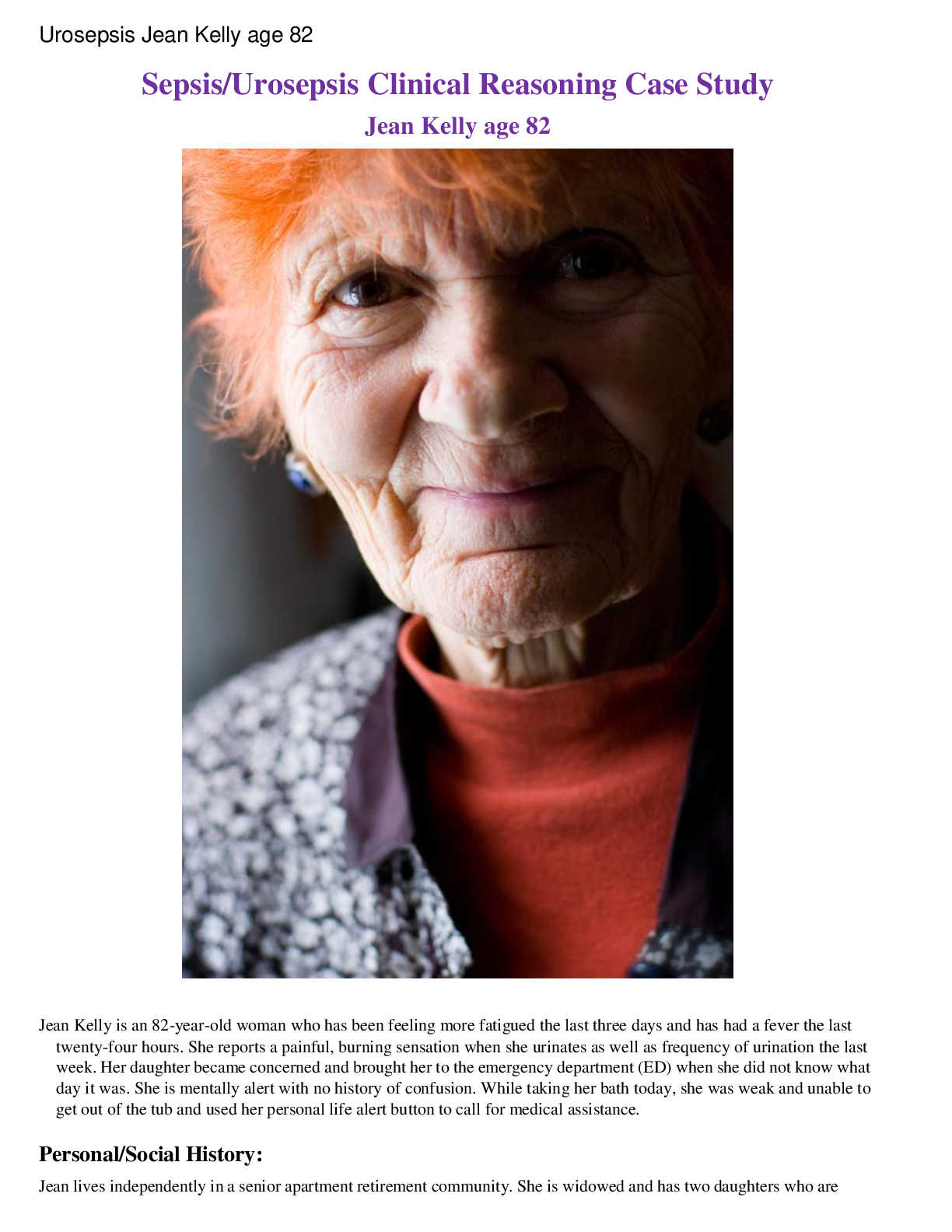
Reviews( 0 )
Document information
Connected school, study & course
About the document
Uploaded On
Mar 09, 2021
Number of pages
14
Written in
Additional information
This document has been written for:
Uploaded
Mar 09, 2021
Downloads
0
Views
66

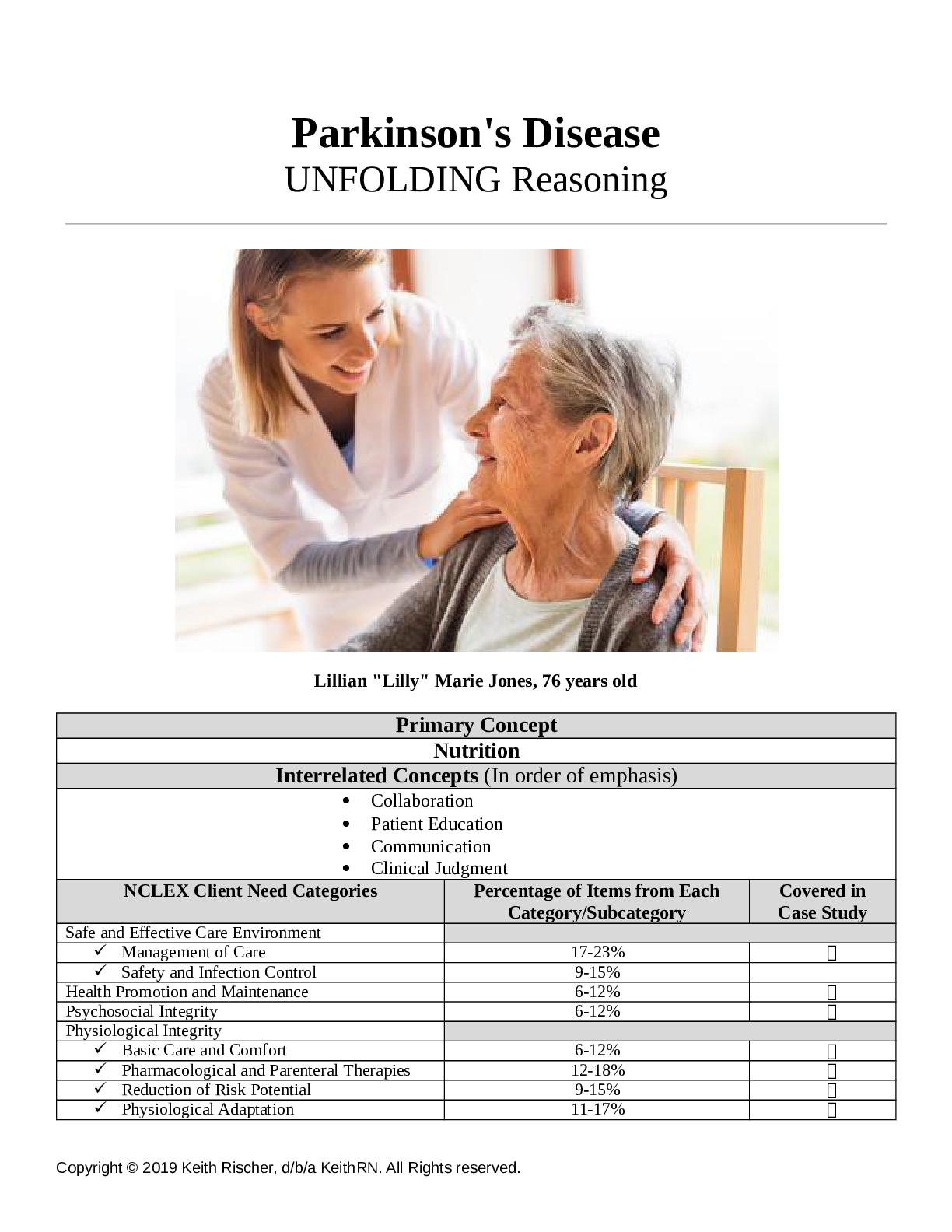
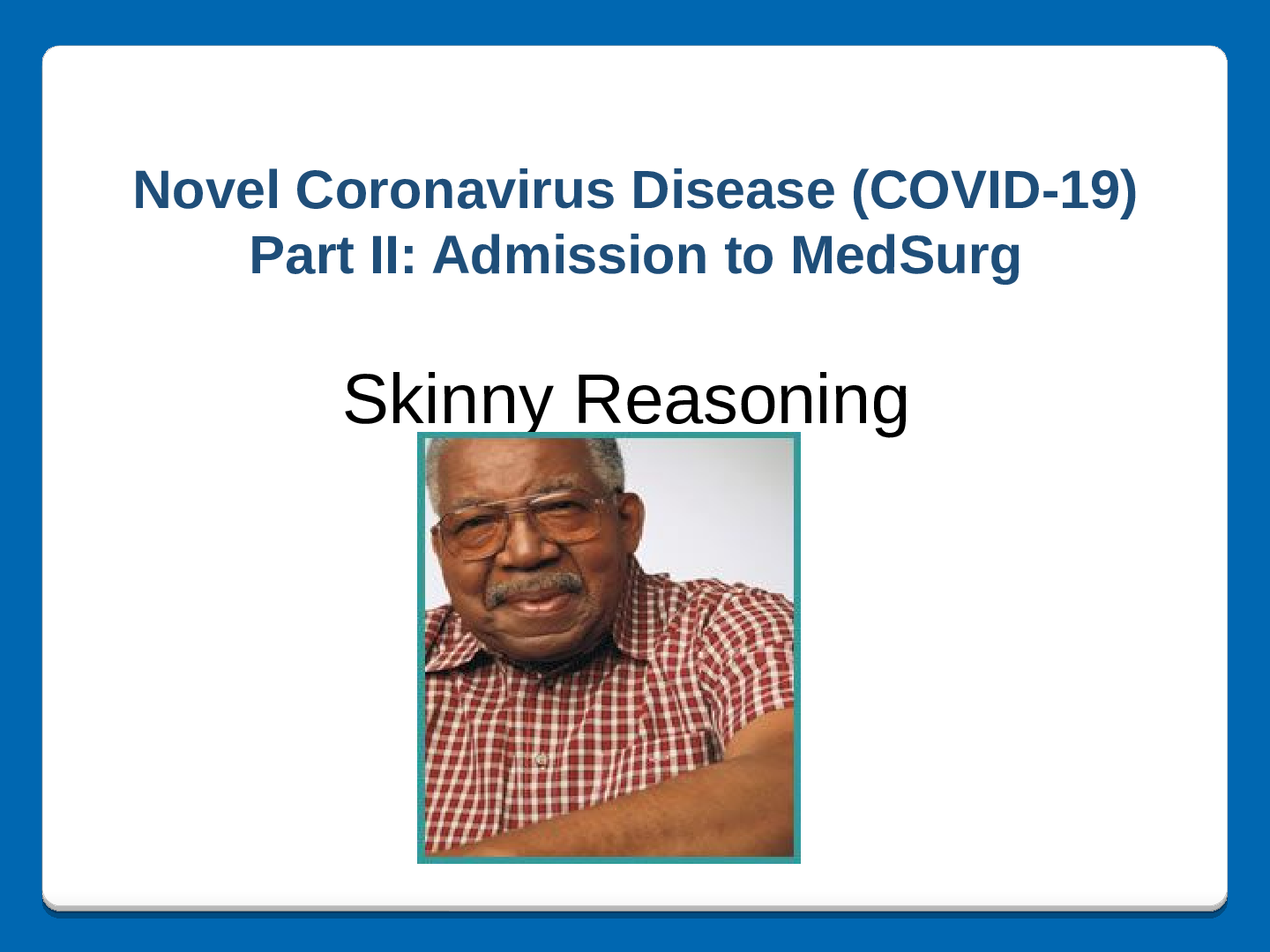
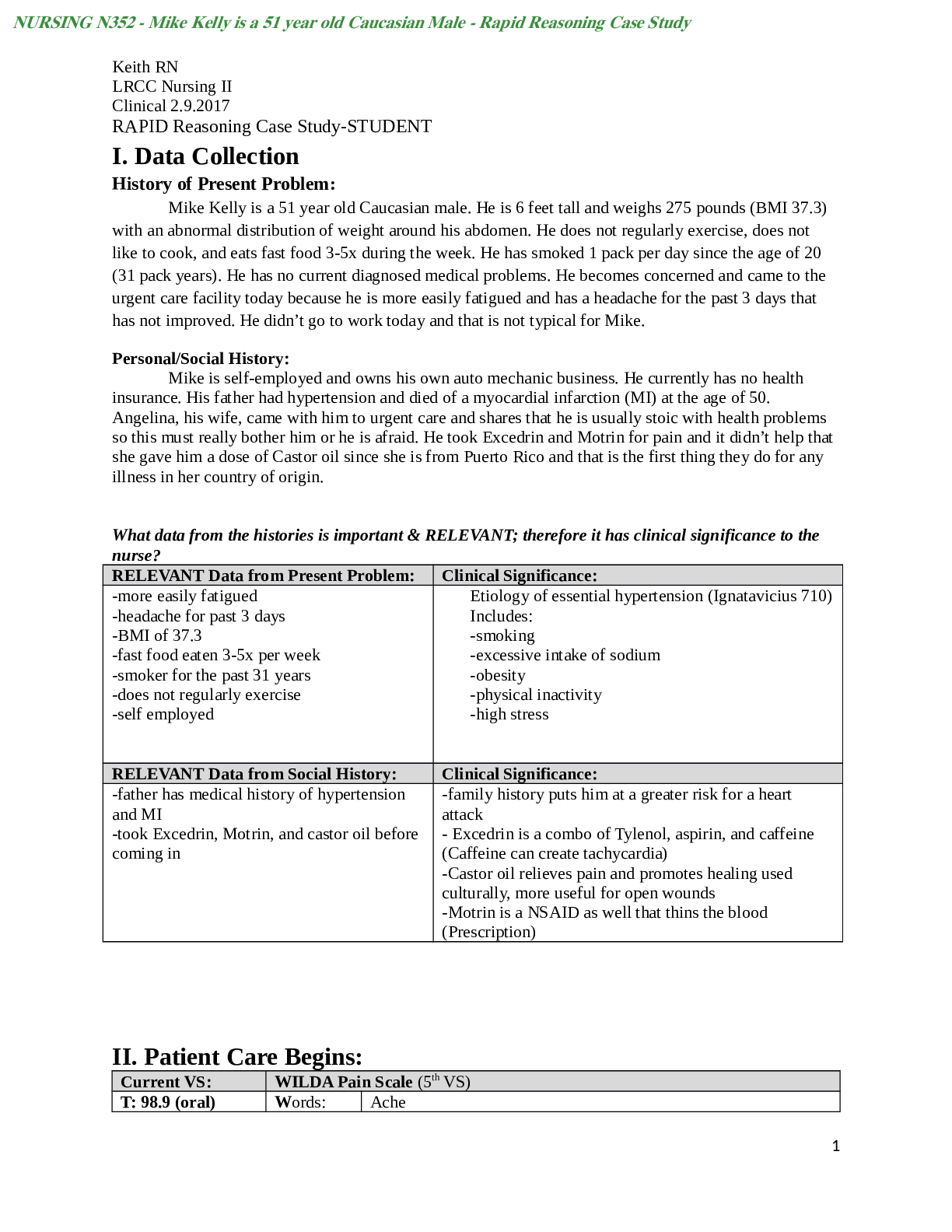
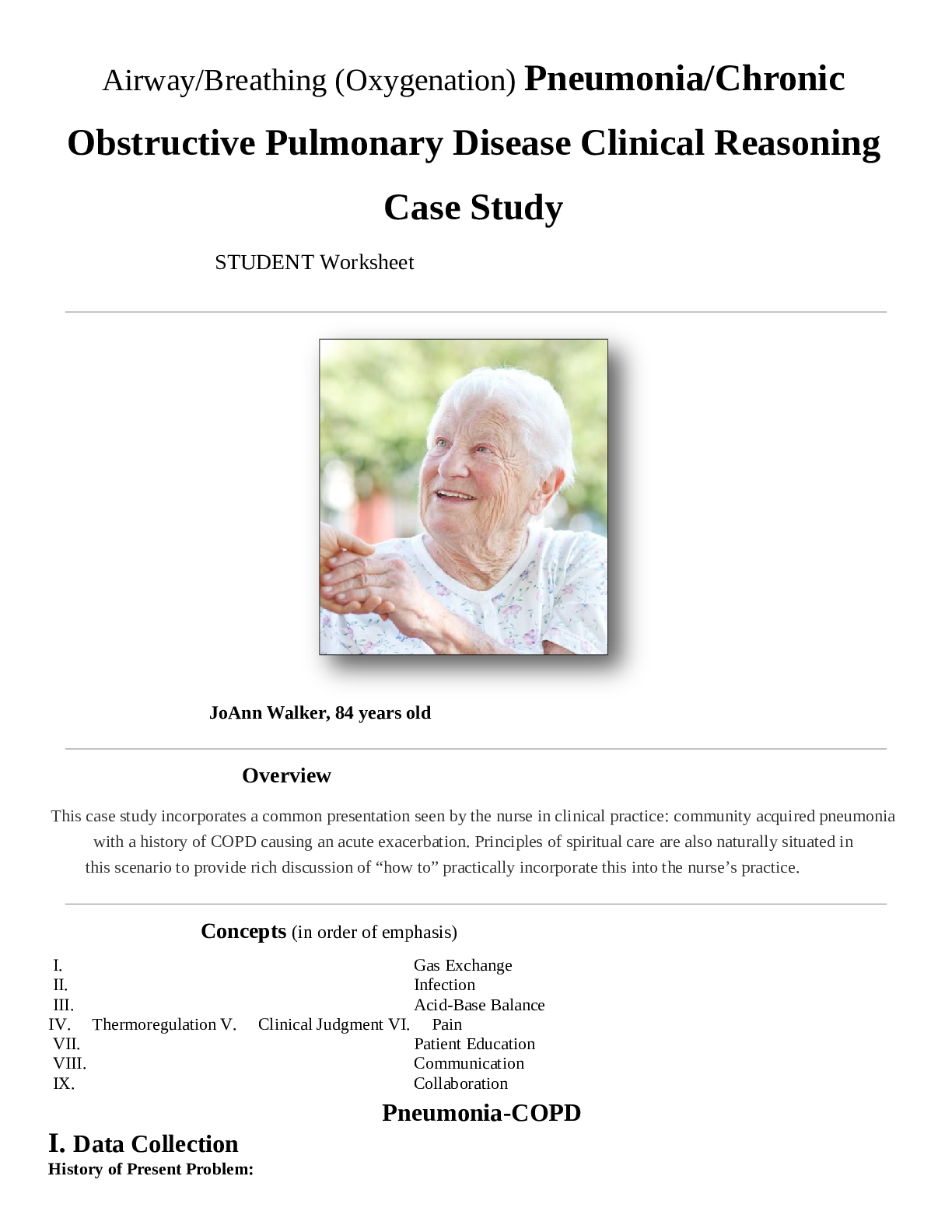
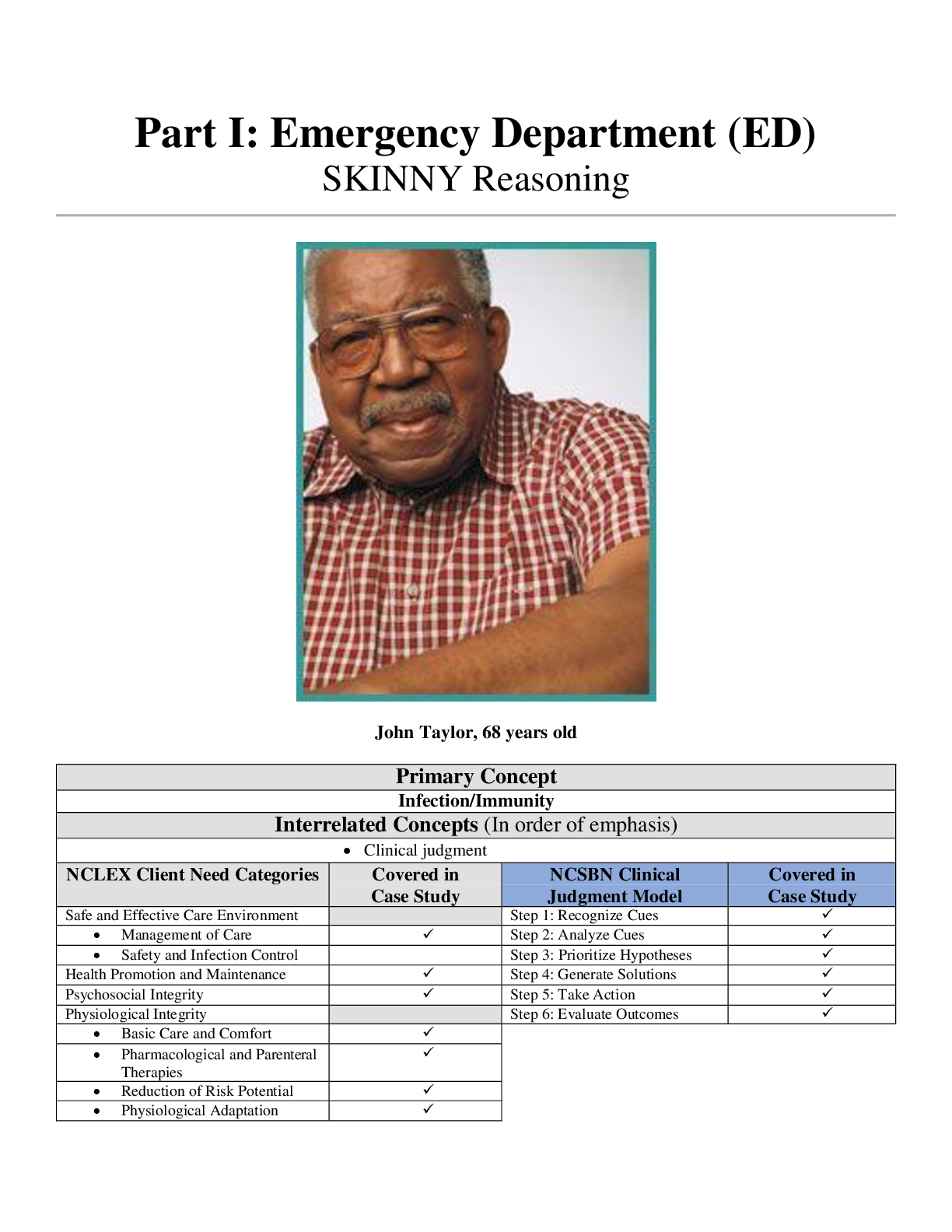






.png)
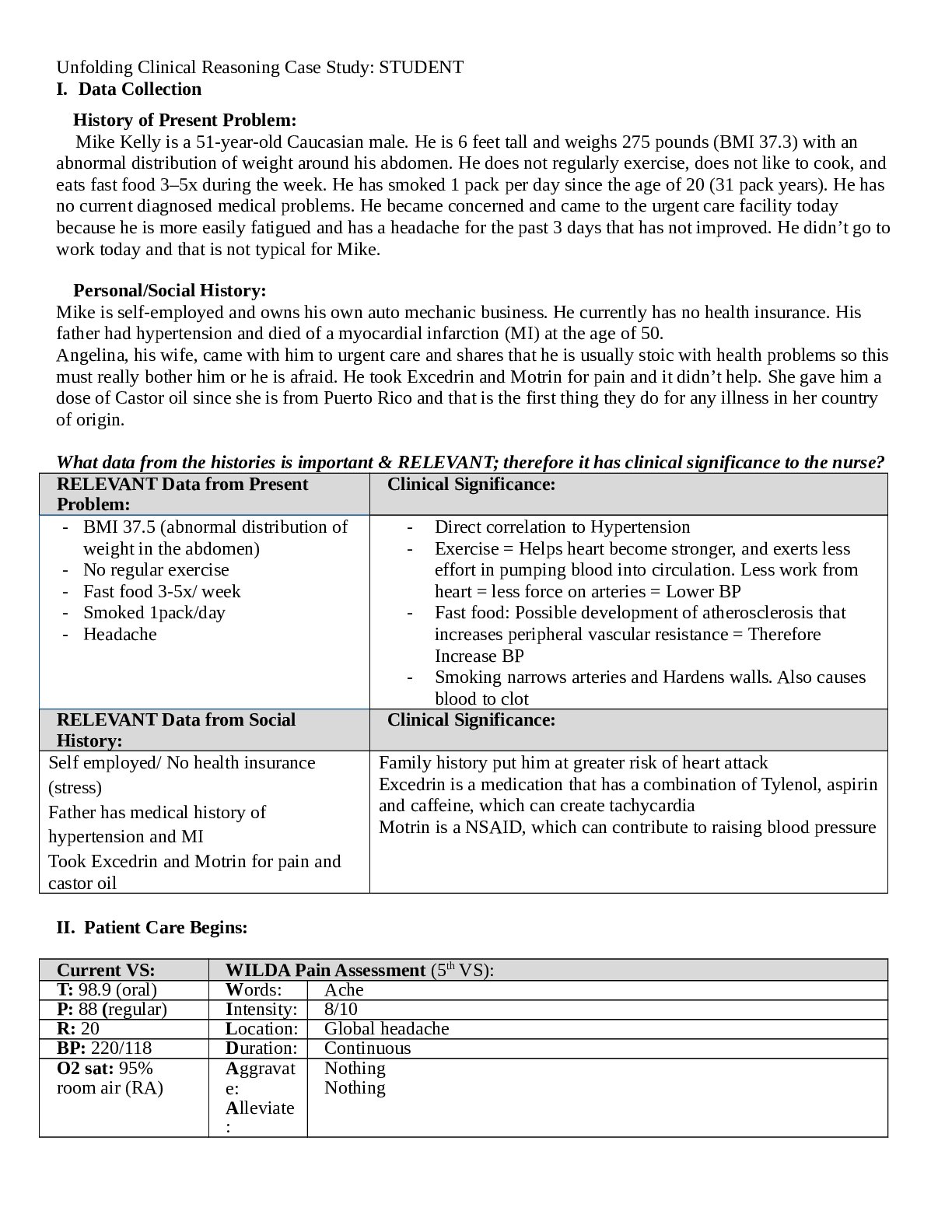
 PneumoniaChronic.png)









 Ben Potter 4 Months Old.png)

